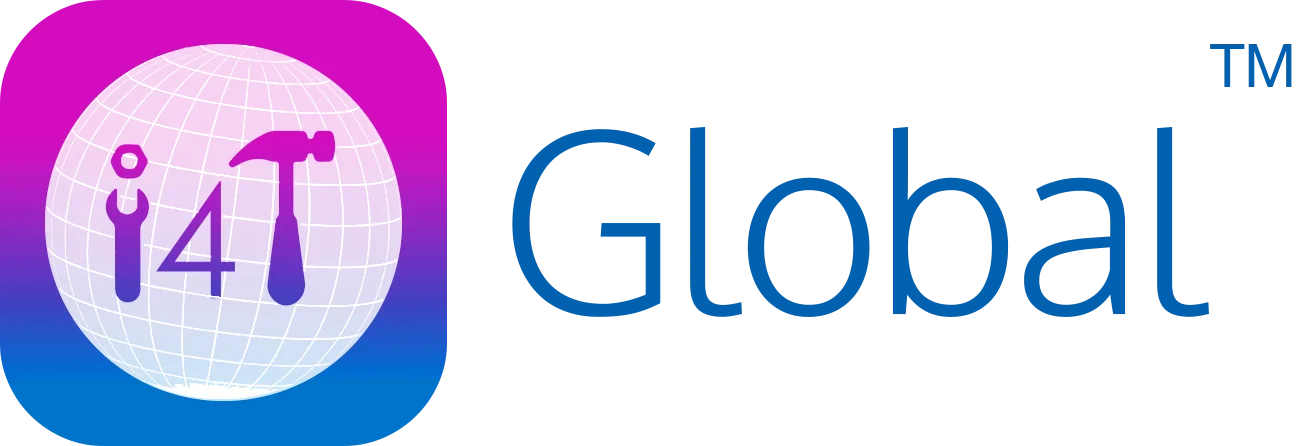“We’ve gone digital… why does it still feel hard?”
Most trade and service businesses have done the heavy lift already. Jobs are in a system, quotes are emailed not faxed, photos and certificates live in the cloud, and there’s a platform running the day-to-day. That’s digital, and it’s a big step up from clipboards and phone tag.
But here’s the honest bit: if work still bottlenecks at triage, dispatchers spend half the day chasing availability, clients keep calling for ETAs, and your team is filing evidence after hours, then digital alone isn’t delivering the calm, predictable, high-throughput operation you were hoping for.
The next leap is to operate intelligently. That means your system doesn’t just record what’s happening; it suggests, prioritises and orchestrates the flow so coordinators, tradies and customers all move faster with fewer headaches. And you don’t get there by buying a shiny new thing and hoping for the best. You get there by stacking three practical moves, in order:
- Lay the rails: One source of truth with clean data and sensible templates.
- Remove the noise: Platform automation that speeds the flow today.
- Add intelligence where it counts: Start with AI-assisted scheduling (recommendations; humans stay in control).
That’s it. Three moves. In this article we’ll unpack each one; what it is, why it matters, and how to do it this quarter.
1. Lay the Rails: One Source of Truth
“Laying the rails” is about creating the stable track your work runs on. It means centralising jobs, assets, evidence and communications in your primary job management platform and then tidying the basics so every job follows a predictable shape:
- Standard job categories and clear priority rules.
- A consistent intake form with the fields you always need (property, asset, category, priority, access notes, photos).
- Dynamic checklists that change by job type (electrical vs plumbing vs roofing), so evidence is captured the same way every time.
- Clean lists for skills/licences, service areas, and SLAs so work can be routed and measured sensibly.
- Unambiguous statuses (“Requested → Accepted → Scheduled → In progress → Completed → Invoiced”), so everyone speaks the same language and automation knows when to fire.
Think of this as housekeeping for your workflow. It’s not glamorous, but it is the difference between a tidy workshop where tools are within reach, and a shed where you spend ten minutes looking for the 10mm socket.
Why it matters
Everything downstream, automation, dashboards, and eventually AI assistance, depends on consistent inputs. If categories are a mess, priorities mean different things to different people, and completion evidence is a lucky dip, then any attempt at intelligence will stumble. Clean rails turn the software you use into a system that can support decisions.
There’s also a human side. When intake always asks for access notes and the day’s best photo, dispatchers stop ringing around to clarify basics, and tradies arrive with proper context. When statuses are standard, no one argues about what “in progress” means. Small frictions disappear, and your day gets quieter in all the right places.
How to do it this quarter
Set aside a short, focused sprint:
- Consolidate: Move jobs, assets, comms and evidence into your job management system and retire side spreadsheets where you can. If something must stay in a spreadsheet during the transition, name it clearly and plan its migration.
Define categories and priorities: Agree on 12–20 categories that cover 95% of your work. Write a one-line definition for each. Do the same for priority levels (e.g., “Urgent = life/safety risk or property damage underway; attend within X hours”).
- Standardise intake: Add fields you always need (access notes, photos, pet on site, after-hours allowed, etc.). Make the critical ones required.
- Build dynamic checklists: For each job type, create a short, sensible checklist that captures what you always chase later (license number, serial, photos, certificates). Keep it tight; if everything is mandatory, nothing is.
- Clean your people and places: Update the skills/licences matrix, service zones, and typical availability windows for your techs or subcontractors. Correct addresses and postcodes for properties (travel time depends on it).
- Name statuses clearly: Remove duplicates, align names across teams, and map your end-to-end flow so everyone can see it at a glance.
Pro tip: Don’t aim for perfection. Aim for “consistently good”. You’ll tighten as you go. The goal is to make excellence the default and mistakes a little bit harder to make.
2. Remove the Noise: Automation That Speeds the Flow
With the rails in place, turn on the automation your job management platform already offers to handle repetitive touchpoints. This is the fastest route to visible wins: fewer “just checking” calls, less re-typing, cleaner invoices. Typical examples:
- Status-based communications: Automatic confirmations when a job is accepted, ETA notifications when scheduled, and plain-English updates when status changes (including photos on completion).
- Appointment reminders: Friendly nudges the day before and the morning of an appointment to reduce no-shows and access dramas.
- Auto-assembled completion packs: When a job closes, the system bundles photos, certificates, test results and notes, and files them to the correct asset/property for easy audit.
- Checklist enforcement: Jobs can’t close if a mandatory fields are not filled at the site, or a photo or certificate is missing. The system doesn’t bark; it simply won’t let poor evidence slip through.
- SLA timers and views: Visual cues that show what truly needs attention right now, so coordinators stop firefighting the wrong fires.
All of this is available today in platforms like i4T Business. No need to wait for AI to see benefits. Automation removes noise immediately and creates the consistent patterns that intelligence will later use.
Why it matters
When updates are automatic, customers don’t ring to chase. When evidence is captured and filed the first time, accounts stop nagging techs for missing paperwork. When checklists are dynamic, the brief matches the job type, and first-time-fix rises. The office starts to feel calmer, not because there’s less work, but because work flows.
Automation also frees your humans for human work: handling exceptions, building relationships, rolling up their sleeves and doing the work on site. That’s where they shine, not in re-typing the same message for the tenth time today.
How to do it this quarter
Roll out in three small bursts:
- Switch on comms at the big moments: Accepted, scheduled (with ETA), in progress, completed. Keep the tone human and consistent with your brand. Add a line about what happens next (“We’ll send photos after completion” / “Our technician will call if access changes”).
- Enforce evidence via checklists: For each job type, mark the 2–4 items that must be present to close the job. Tie them to the checklist you built earlier. Keep it lean so it’s respected.
- Auto-assemble completion packs: Configure your platform so the pack builds itself and lands against the right property and asset, not someone’s email inbox. If owners need a copy, have the system send it with a short, friendly summary.
Then, track a tiny scorecard:
- Time to assign and time to complete (you should see both trend down).
- Evidence completeness on first submission (trend up).
- Client/tenant satisfaction via a quick one-question pulse (trend up).
- “Just checking” calls volume (trend down; your team will notice this one).
Weekly review the numbers and tweak the messages or checklists that cause friction. This is about rhythm, not heroics.
3. Add Intelligence Where It Counts: AI-Assisted Scheduling and Dispatch
Once your rails are down and the noise is reduced, you’re ready to introduce intelligence where it has the biggest payoff: scheduling. In practice, this begins as recommendation-style scheduling. The system proposes the best technician or subcontractor for a job based on:
- Skills and licences required for the job type.
- Proximity to the site to ensure less travel, and faster attendance.
- Availability windows shows who can actually attend within the SLA
- Historical outcomes to intelligently assign based on first-time-fix history, job quality, and callbacks.
Crucially, the dispatcher stays in control. The system provides a smart short-list with a one-line explanation (“Recommended: licenced roof plumber; 5km; completed 12 similar jobs with 92% first-time-fix”).
The coordinator accepts or overrides. It’s decision support, not autopilot.
Why it matters
Scheduling is where minutes, kilometres and first-time-fix are won or lost. A recommendation engine trims the ring-around, reduces travel, and sends the right person with the right context to the right job. Dispatch becomes calmer and more consistent, even when the day gets bumpy.
It also builds fairness and transparency. Suggestions are based on clear data and explainable logic, not “who answered the phone first” or habit. If the dispatcher overrides the recommendation, they can record why, such as “closest tech stuck on an emergency, so i chose next best”. Over time, the model learns from that feedback and improves.
How to prepare and pilot smartly
You don’t need to go big on day one. A tidy, low-risk pilot is best:
- Prep the data you already use
- Keep your skills/licences matrix current for each tech/subbie.
- Maintain service zones and typical availability windows.
- Ensure your job categories map to the skills you actually need.
- Start narrow
- Pick one job class with steady volume but lower risk (e.g., non-urgent plumbing or routine electrical maintenance).
- Use recommendations as an advisory list, not auto-assign.
- Run for a fortnight or two while you compare outcomes to “business as usual”.
- Keep guardrails
- Make suggestions explainable (“Why this tech?”).
- Log overrides with a quick dropdown reason.
- Review weekly with the team: what felt helpful, what didn’t, and what data needs tidying.
- Measure the right few metrics
- Time to assign (should fall).
- Travel distance/time (proxy via postcodes; should fall).
- First-time-fix and repeat within 30–90 days (should improve).
- Dispatcher and technician sentiment (a simple “thumbs up / down” works).
When you can see the wins and the team feels heard, extend the pilot to another job class. Keep it incremental and you’ll avoid the usual change-management blues.
Bringing it together and keeping it human
AI isn’t the first step. It surely isn’t last. What’s important to understand is that for AI to work for you, the sequence of steps you need to take must be in the right order.
Set the foundation, clean the data, and then add the intelligence layer, simplifying one workflow at a time.
Finally, make sure AI acts as decision support. Keep judgment with your people, and use feedback to make the model smarter.
This is the essence of AI-First Thinking from Think Digital: Rewired for the AI Age. A book I’ve written for businesses like yours.
It doesn’t mean “buy AI first”. It means design your flow so intelligence has a seat at the table, and when you add it, it actually helps.
If you want the broader playbook, frameworks, scorecards and step-by-step pilots you can run with your team, you’ll find it in Think Digital: Rewired for the AI Age. Each chapter goes deeper into designing flows that welcome intelligence safely, simply and at low cost.
Grab your copy here and turn “we’ve gone digital” into “we run intelligently.”
FAQs
No. Start with “consistently good”. The templates and checklists you introduce will create better data as a by-product.
No. The best results come when AI removes grunt work (re-typing, ring-around) so coordinators focus on exceptions, relationships and quality.
Often within 30–60 days after switching on status-based comms and enforcing evidence at close. Scheduling recommendations typically show benefits in the first pilot fortnight.
Not necessarily. Most benefits come from using your existing platform more intelligently and introducing small, targeted assists. Save the big spend for when the foundations are paying off.
Avoid piping sensitive personal data into consumer AI tools; prefer platform integrations or enterprise-grade options. Make recommendations explainable and track overrides to correct bias.
Hot off the press!

Field Service Management sector operates, the i4TGlobal Team loves to share industry insights to help streamline your business processes and generate new leads. We are driven by innovation and are passionate about delivering solutions that are transparent, compliant, efficient and safe for all stakeholders and across all touch points.
Recent articles that may interest you as well..




